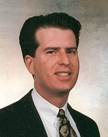By SUDEEP REDDY
December 7, 2007; WSJ
The number of homes starting foreclosure jumped in the third quarter to the highest level since the Mortgage Bankers Association began keeping track in 1972, while the fraction of homeowners behind in their payments rose to the highest level in 21 years.
Both reflect the continuing credit-market turmoil, a slowing economy and falling house prices.
Foreclosures rose for all types of mortgage loans, according to the association's quarterly survey. But the upturn was sharpest for adjustable-rate mortgages, including homeowners with better records who are considered to be in the "prime" loan category.
An uptick in foreclosure starts for prime, fixed-rate mortgages was largely because of increases in four states -- Florida, Ohio, Michigan and California -- that are taking some of the worst hits from the housing market correction. Doug Duncan, the association's chief economist, said that in most states the increase in foreclosure starts for those loans is due to borrowers falling behind on payments for "traditional reasons" such as employment or medical or marital problems, and then being unable to sell their homes because of market conditions.
About 0.78% of loans entered the foreclosure process during the quarter, compared with 0.65% from the second quarter. Some 1.69% of all loans outstanding at the end of the quarter were in the process of foreclosure, compared with 1.4% in the second quarter and about 1% in the year-earlier third quarter.
The mortgage delinquency rate, a measure of loans at least 30 days past due but not in foreclosure, rose to a seasonally adjusted 5.59% for one-to-four unit residential properties, the highest since 1986. That was up almost half a percentage point from the second quarter and nearly one percentage point higher than a year earlier.
Subprime adjustable-rate mortgages continued to have the most problems, with 4.72% of those loans starting the foreclosure process during the quarter. Those mortgages represent 6.8% of loans outstanding but accounted for 43% of new foreclosures during the quarter.
Prime adjustable-rate mortgages, which account for one out of seven loans, accounted for 18.7% of new foreclosures. "This development is not especially encouraging for the future, as scheduled resets on adjustable-rate mortgages intensify in the fourth quarter and remain high in 2008," Daiwa Securities economist Michael Moran said in a note to clients.
Separately, U.S. homeowners' equity in real estate dropped $128.5 billion, or 1.2%, in the third quarter to $10.6 trillion as home prices fell and mortgage debt rose, according to data released yesterday by the Federal Reserve. That is the second quarterly decline. Homeowners' equity surged 38% from 2002 through the end of last year and peaked at $10.7 trillion in the first quarter, according to the Fed's quarterly flow of funds report.
The Fed also said borrowing to banks at its discount window surged over the past week. Discount-window loans jumped to $2.1 billion through Wednesday, up from just $8 million a week earlier.
December 7, 2007; WSJ
The number of homes starting foreclosure jumped in the third quarter to the highest level since the Mortgage Bankers Association began keeping track in 1972, while the fraction of homeowners behind in their payments rose to the highest level in 21 years.
Both reflect the continuing credit-market turmoil, a slowing economy and falling house prices.
Foreclosures rose for all types of mortgage loans, according to the association's quarterly survey. But the upturn was sharpest for adjustable-rate mortgages, including homeowners with better records who are considered to be in the "prime" loan category.
An uptick in foreclosure starts for prime, fixed-rate mortgages was largely because of increases in four states -- Florida, Ohio, Michigan and California -- that are taking some of the worst hits from the housing market correction. Doug Duncan, the association's chief economist, said that in most states the increase in foreclosure starts for those loans is due to borrowers falling behind on payments for "traditional reasons" such as employment or medical or marital problems, and then being unable to sell their homes because of market conditions.
About 0.78% of loans entered the foreclosure process during the quarter, compared with 0.65% from the second quarter. Some 1.69% of all loans outstanding at the end of the quarter were in the process of foreclosure, compared with 1.4% in the second quarter and about 1% in the year-earlier third quarter.
The mortgage delinquency rate, a measure of loans at least 30 days past due but not in foreclosure, rose to a seasonally adjusted 5.59% for one-to-four unit residential properties, the highest since 1986. That was up almost half a percentage point from the second quarter and nearly one percentage point higher than a year earlier.
Subprime adjustable-rate mortgages continued to have the most problems, with 4.72% of those loans starting the foreclosure process during the quarter. Those mortgages represent 6.8% of loans outstanding but accounted for 43% of new foreclosures during the quarter.
Prime adjustable-rate mortgages, which account for one out of seven loans, accounted for 18.7% of new foreclosures. "This development is not especially encouraging for the future, as scheduled resets on adjustable-rate mortgages intensify in the fourth quarter and remain high in 2008," Daiwa Securities economist Michael Moran said in a note to clients.
Separately, U.S. homeowners' equity in real estate dropped $128.5 billion, or 1.2%, in the third quarter to $10.6 trillion as home prices fell and mortgage debt rose, according to data released yesterday by the Federal Reserve. That is the second quarterly decline. Homeowners' equity surged 38% from 2002 through the end of last year and peaked at $10.7 trillion in the first quarter, according to the Fed's quarterly flow of funds report.
The Fed also said borrowing to banks at its discount window surged over the past week. Discount-window loans jumped to $2.1 billion through Wednesday, up from just $8 million a week earlier.

No comments:
Post a Comment